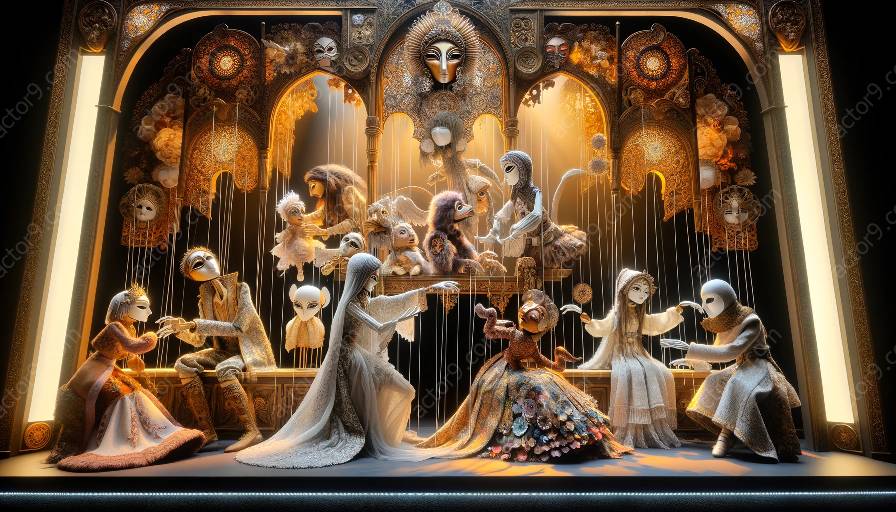When it comes to the world of performance art, the intersection of puppetry and mask work with improvisation techniques opens up a realm of creativity and expression that transcends boundaries. In this exploration, we will delve into how these elements intersect and complement each other in various art forms, shaping unique and captivating experiences for both performers and audiences.
Understanding Improvisation in Puppetry and Mask Work
Improvisation in puppetry and mask work involves the spontaneous creation and performance of characters, scenes, and narratives without a predetermined script. It requires expressive movement, vocalization, and the ability to embody the essence of the characters through the manipulation of puppets or masks. This form of improvisation calls for flexibility, adaptability, and quick thinking, as the performers must react and respond in the moment, often without verbal communication.
The Art of Improvisation in Theatre
Improvisation in theatre is a well-established and respected art form that challenges actors to think on their feet and be fully present in the moment. It involves creating dialogue, actions, and narratives spontaneously, often based on prompts or suggestions from the audience or fellow performers. The core principles of improvisation in theatre include active listening, building off others' contributions, and embracing the unexpected, all of which are essential for creating compelling and authentic performances.
Bringing it All Together: The Intersection
When puppetry, mask work, and improvisation techniques converge, they form a multi-dimensional and vibrant art form that transcends traditional boundaries. In puppetry, improvisation can manifest through the fluid movements and gestures of the puppet, as well as the ability of the puppeteer to infuse emotions and intentions into their performance. Mask work, on the other hand, often involves physical expression and a heightened sense of physicality, where improvisation plays a crucial role in conveying the essence of the character portrayed.
These elements intersect with improvisation techniques in other art forms in fascinating ways. In dance, for example, the use of masks and puppetry can become an integral part of storytelling and expression, allowing dancers to embody characters and narratives with a sense of freedom and spontaneity. Similarly, in music and opera, the incorporation of puppetry and masks can add a visual and performative dimension, enhancing the storytelling and emotional impact of the musical performances.
The Transformative Power of Intersecting Art Forms
When puppetry and mask work intersect with improvisation techniques in other art forms, they have the power to transform the way stories are told and experiences are shared. From collaborative improvisational performances that blend theatre, puppetry, and mask work to innovative interdisciplinary productions, the possibilities are limitless.
By embracing the interconnectedness of these art forms, performers can tap into a rich tapestry of creativity, expression, and storytelling, offering audiences unique and immersive experiences that resonate on a profound level. The intersection of puppetry, mask work, and improvisation in various art forms ignites the imagination and invites individuals to explore new realms of artistic expression and connection.




























